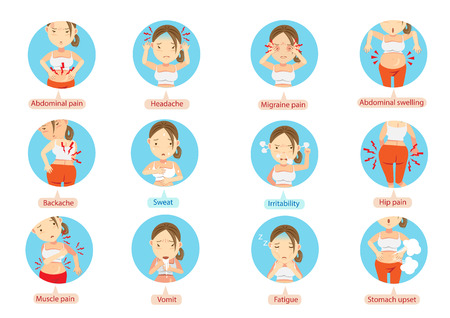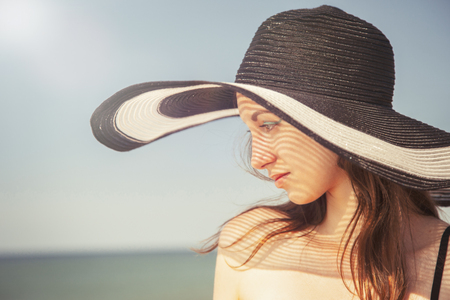Understanding Premature Aging and Sun Damage
Premature aging is when your skin starts to look older than it should for your age. This means things like wrinkles, fine lines, dark spots, and a loss of skin firmness start showing up earlier than you’d expect. While getting older is natural, many signs of aging can actually be made worse by outside factors, especially sun exposure.
What Causes Premature Aging?
The main reason for premature aging is exposure to ultraviolet (UV) rays from the sun. Even on cloudy days or when you’re just running errands, these UV rays can damage your skin. Here’s how it happens:
- UVA Rays: Penetrate deep into the skin and cause long-term damage like wrinkles and sagging.
- UVB Rays: Affect the surface of your skin, causing sunburns and sometimes leading to uneven skin tone.
How UV Exposure Accelerates Skin Aging
When your skin is exposed to UV rays without protection, it leads to something called “photoaging.” This process breaks down collagen and elastin in your skin—these are proteins that keep your skin firm and smooth. Over time, repeated sun exposure without sunscreen can make you look older than you really are.
| Type of UV Ray | Main Effect on Skin | Visible Signs |
|---|---|---|
| UVA | Deep skin penetration | Wrinkles, sagging |
| UVB | Surface damage | Sunburn, dark spots |
Why It Matters in Everyday American Life
A lot of Americans spend time outdoors—whether it’s going for a walk, driving, gardening, or enjoying sports. Many people don’t realize that sun damage adds up even during quick activities like grabbing the mail or sitting near a sunny window. That’s why using sunscreen every day is so important. It helps protect your skin from harmful UV rays and keeps you looking younger, longer.
2. How Sunscreen Shields Your Skin
The Science Behind Sun Protection
When you step outside, your skin is exposed to two main types of ultraviolet (UV) rays from the sun: UVA and UVB. Both can cause damage, but in different ways. UVA rays penetrate deep into the skin and are a major culprit behind premature aging, like wrinkles and age spots. UVB rays mostly affect the outer layers, causing sunburns and playing a big role in developing skin cancer.
How Sunscreen Works
Sunscreens act as invisible shields for your skin. They use specific ingredients that either absorb or reflect these harmful rays before they can do any damage. Here’s a simple breakdown of how sunscreens protect you:
| Type of Ray | What It Does | How Sunscreen Protects |
|---|---|---|
| UVA | Causes wrinkles, loss of elasticity, dark spots | Ingredients like avobenzone and zinc oxide absorb or reflect these rays |
| UVB | Causes sunburn, increases risk of skin cancer | Ingredients like octinoxate and titanium dioxide block or absorb UVB rays |
Chemical vs. Mineral Sunscreens
There are two main kinds of sunscreen formulas—chemical and mineral (sometimes called physical):
- Chemical Sunscreens: These soak into the skin and absorb UV rays, turning them into harmless heat. Common ingredients include oxybenzone, avobenzone, and octisalate.
- Mineral Sunscreens: These sit on top of your skin and physically block UV rays like a mirror. The most popular minerals used are zinc oxide and titanium dioxide.
Which Should You Choose?
If you have sensitive skin, mineral sunscreens are often less irritating. If you want something lightweight and invisible under makeup, many people prefer chemical sunscreens. No matter which you choose, make sure it says “broad-spectrum” on the label so you’re protected from both UVA and UVB rays.

3. Key Ingredients That Make Sunscreens Effective
When shopping for sunscreen in the U.S., it’s important to know which ingredients actually protect your skin from premature aging. The best sunscreens combine science-backed ingredients that shield your skin from harmful UVA and UVB rays, both of which contribute to wrinkles, dark spots, and loss of elasticity. Here’s a breakdown of common and innovative sunscreen ingredients, plus tips on how to read labels like a pro.
Physical (Mineral) Sunscreen Ingredients
Physical, or mineral, sunscreens sit on top of your skin and reflect UV rays. They’re often recommended for sensitive skin and are less likely to cause irritation or breakouts.
| Ingredient | What It Does | Common Uses |
|---|---|---|
| Zinc Oxide | Protects against both UVA and UVB rays (broad spectrum). Also soothing for sensitive or acne-prone skin. | Face sunscreens, baby products, “reef-safe” formulas |
| Titanium Dioxide | Mainly blocks UVB and some UVA rays. Gentler on the skin compared to many chemical filters. | Facial sunscreens, mineral makeup, kids’ formulas |
Chemical Sunscreen Ingredients
Chemical sunscreens absorb UV radiation before it can damage your skin. These tend to be lightweight and invisible on the skin—great for daily use under makeup.
| Ingredient | What It Does | Best For |
|---|---|---|
| Avobenzone | Effective at absorbing UVA rays (which cause aging). Needs to be stabilized with other ingredients. | Broad-spectrum lotions, facial sunscreens |
| Octocrylene & Octinoxate | Absorb mainly UVB rays. Often combined with avobenzone for better coverage. | Lightweight daily sunscreens, sport formulas |
| Homosalate & Oxybenzone* | Absorb UVB rays. Note: Oxybenzone is less popular now due to environmental concerns. | Older formulations (check if you want reef-friendly options) |
*Note:
If you’re concerned about ocean safety, look for “reef-safe” labels that avoid oxybenzone and octinoxate—this is especially important in places like Hawaii where certain chemicals are banned.
What Americans Should Look For On Sunscreen Labels
- BROAD SPECTRUM: Protects against both UVA and UVB rays—essential for anti-aging benefits.
- SPF 30 or Higher: SPF 30 is generally recommended by dermatologists for everyday protection.
- Water Resistance: If you’re swimming or sweating, choose a formula labeled as water resistant (40 or 80 minutes).
- Sensitive Skin? Opt for zinc oxide or titanium dioxide-based formulas labeled as “mineral,” “gentle,” or “for sensitive skin.”
Sunscreen Ingredient Cheat Sheet for American Shoppers:
| Label Term | What It Means For You |
|---|---|
| Broad Spectrum | Covers both wrinkle-causing UVA and burning UVB rays. |
| Zinc Oxide/Titanium Dioxide | Mild, physical blockers—good for all ages/skin types. |
| No Oxybenzone/Octinoxate | Avoids controversial chemicals; may be safer for reefs. |
The right sunscreen ingredients make all the difference in keeping your skin looking youthful and healthy. Next time you shop, check those labels—and remember, no matter the brand, daily sunscreen is one of the most effective steps you can take to prevent premature aging!
4. Popular Sunscreen Formulations for American Lifestyles
In the U.S., sunscreen isn’t just a summer must-have—it’s part of daily life for many people. With such active and varied routines, Americans look for sunscreens that fit their lifestyle, whether they’re heading to work, playing sports, or enjoying the outdoors. Here’s a breakdown of popular sunscreen formulations that cater to different needs:
Lotion Sunscreens
Lotion sunscreens are classic for a reason. They offer even coverage and are easy to apply on large areas like arms, legs, and back. Many lotions are now lightweight and non-greasy, making them comfortable for everyday use—even under makeup. People who commute or spend time outdoors often pick lotions with broad-spectrum protection and moisturizing ingredients.
Spray Sunscreens
Spray sunscreens are all about convenience. Perfect for families, athletes, or anyone on the go, sprays make it quick and easy to reapply sunscreen—especially on hard-to-reach spots like your back. Many Americans keep a spray bottle in their gym bag or car for fast touch-ups during outdoor activities or sports events.
Stick Sunscreens
Stick sunscreens are super portable and mess-free. They’re ideal for targeted application on areas like the face, ears, nose, and shoulders. This format is especially popular with runners, hikers, and kids because it’s easy to carry in a pocket or backpack and doesn’t spill.
Mineral (Physical) Formulas
Mineral sunscreens contain zinc oxide or titanium dioxide as active ingredients. These formulas sit on top of the skin to reflect UV rays, making them a favorite for those with sensitive skin or anyone wanting a “clean” beauty product. Mineral options now come in lotions, sticks, and even tints—so they work well for daily commutes as well as beach days.
Sunscreen Formulation Comparison Table
| Formulation | Best For | Key Benefits |
|---|---|---|
| Lotion | Daily use, full-body coverage | Hydrating, blends well under makeup |
| Spray | Quick application, families, athletes | Easy to reapply, covers large areas fast |
| Stick | Targeted protection, travel, kids | No mess, great for face/ears/nose |
| Mineral | Sensitive skin, eco-conscious users | No chemical filters, less irritation risk |
Sunscreen choices in America reflect an active lifestyle—whether you’re commuting downtown or hiking a mountain trail. The key is finding a formula that fits your routine so you can protect your skin every day from premature aging.
5. Real-World Tips for Consistent Sunscreen Use
Making Sunscreen Part of Your American Lifestyle
Integrating sunscreen into your daily routine doesn’t have to be complicated, no matter your skin type or lifestyle. Here are some easy, practical tips tailored for American routines—from quick mornings to outdoor adventures.
How to Apply and Reapply Sunscreen—Made Simple
| Time of Day | What to Do | Tips for All Skin Types |
|---|---|---|
| Morning (Before Leaving Home) | Apply a broad-spectrum sunscreen (SPF 30+), even if you’ll be indoors. Use about a nickel-sized amount for your face and more for other exposed areas. | Look for lightweight formulas if you have oily or acne-prone skin. For dry skin, choose hydrating sunscreens with added moisturizers. |
| During the Day (At Work/School/Outdoors) | Reapply every two hours, especially if you’re outside, sweating, or after swimming. If you wear makeup, use a spray or powder sunscreen for touch-ups. | If you have sensitive skin, mineral sunscreens with zinc oxide or titanium dioxide may cause less irritation. |
| Afternoon Activities (Sports/Outdoor Events) | Don’t forget often-missed spots: ears, neck, hands, and tops of feet. Carry a travel-size sunscreen in your bag or car for convenience. | Choose water-resistant formulas for sports or beach days. |
Sunscreen and Makeup—No Need to Compromise
How to Layer Sunscreen and Makeup
- Sunscreen goes first: Always apply sunscreen on clean skin before foundation or any makeup products.
- Let it set: Give it a minute to absorb so makeup goes on smoothly.
- Makeup with SPF isn’t enough: It’s helpful but shouldn’t replace your regular sunscreen.
- Easiest reapplication: Try powder or spray sunscreens made specifically for applying over makeup during the day.
Pro Tip:
If you love multitasking products, look for tinted sunscreens—they offer sun protection and light coverage in one step!
Sunscreen for Every Skin Type and Tone
- Dry Skin: Go for cream-based, moisturizing sunscreens with hyaluronic acid or glycerin.
- Oily/Acne-Prone Skin: Choose oil-free gels or fluid formulas labeled “non-comedogenic.”
- Sensitive Skin: Stick with fragrance-free mineral sunscreens (zinc oxide/titanium dioxide).
- Darker Skin Tones: Look for sheer formulas that won’t leave a white cast—gel-based or tinted sunscreens work great.
No Excuses: Keep Sunscreen Handy Everywhere!
- Toss a mini tube in your backpack, purse, gym bag, or glove compartment.
- If you’re active outdoors (hiking, biking), keep stick sunscreens for quick touch-ups without mess.
- Add reminders on your phone or bathroom mirror so you never skip a day—even when it’s cloudy.


